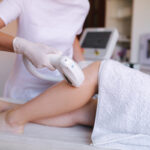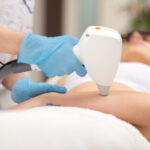Why You Should Think Twice Before Using At-Home Hair Removal Devices
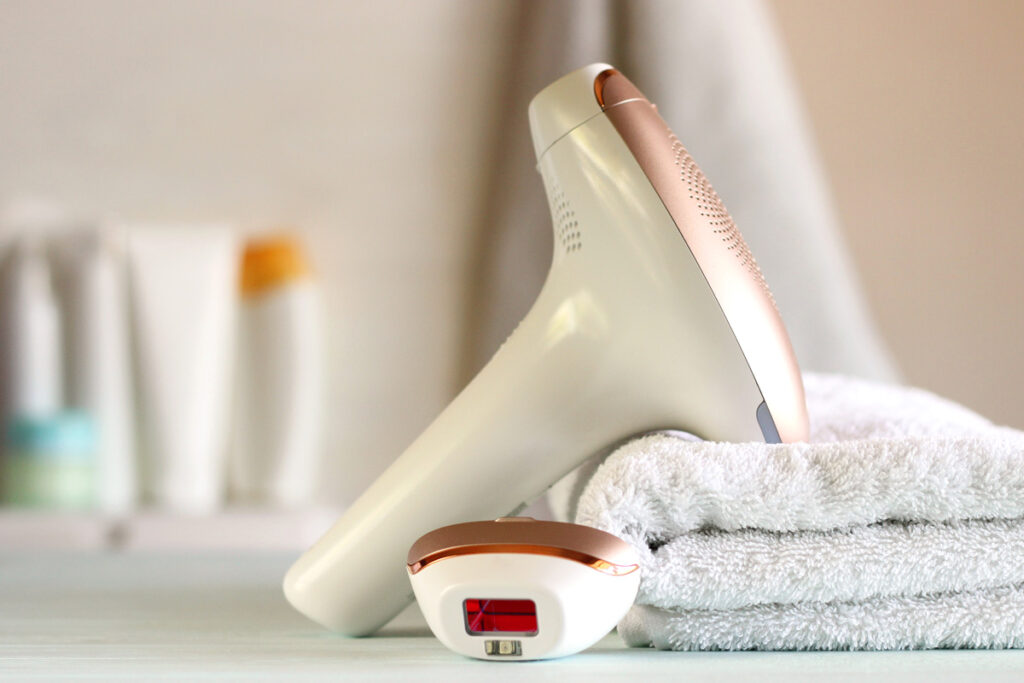
The Promise of At-Home Hair Removal — and the Problems It Hides
At-home laser hair removal devices are everywhere these days. Influencers rave about them, online stores offer hundreds of options, and DIY beauty seems more accessible than ever. The appeal is obvious: no appointments, no travel, and the promise of smooth skin from the comfort of your own home.
But if you’re considering one of these devices, it’s worth pausing and asking: Is it really as safe and effective as it sounds?
At Perizia Aesthetics, we’ve seen firsthand what can happen when these devices don’t perform as promised—or worse, when they cause harm. As a professional medspa serving Jupiter and the surrounding area, our priority is your safety, your results, and your skin health.
If you’re thinking about laser hair removal—at home or in-office—we encourage you to read on. Or, if you’d like to speak with a licensed professional now, call us at 561-318-7895 or contact us here.
Understanding the Difference: Home vs Professional Devices
Not all lasers are created equal.
At-home hair removal devices typically use IPL (intense pulsed light), which emits a broad spectrum of light. In contrast, professional systems use true lasers—like diode, alexandrite, or Nd:YAG—which operate at a single, targeted wavelength.
Why does that matter? It’s all about precision, depth, and safety.
Professional lasers can reach deeper into the follicle, use higher fluence per pulse, and offer customizable settings based on your skin tone, hair type, and sensitivity. Many also include integrated cooling systems to protect the skin.
In contrast, home-use devices are designed to limit power output to reduce the chance of injury—but this also significantly reduces their effectiveness. According to a PubMed clinical study, underarm hair removal with a home-use device produced about 52% hair reduction on one side and 46.3% on the other, while professional treatment achieved up to 88% reduction. That’s a major difference.
The result? Home devices may help reduce hair temporarily, but they rarely offer permanent reduction—and often require far more sessions over time.
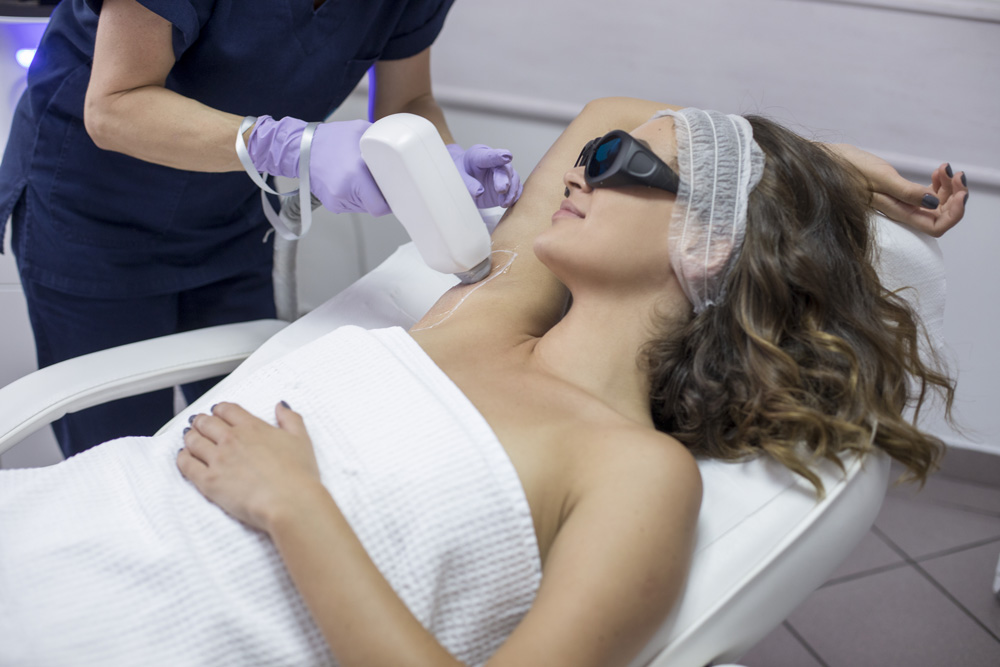
What the Research Says: Home Devices Fall Short
A deep dive into the data confirms what most medical professionals already know: home devices are not a replacement for in-office care.
A broader review published in Taylor & Francis examined long-term results of light-based hair removal. One key finding was that results vary significantly by body site, and home-use devices showed markedly lower efficacy, especially in thicker-hair or hormonally sensitive zones.
Even more concerning: many home devices rely on preset settings or basic skin sensors that fail to adjust accurately for varying tones, hair thickness, or user error.
And as noted in a Wikipedia overview, IPL devices—used in many home kits—emit a wide range of wavelengths, making them less selective. This increases the risk of damaging surrounding skin, especially in clients with darker tones or sensitive areas.
In short: convenience comes at a cost.
The Risks Most People Don’t Know About
Perhaps the most important reason to rethink at-home hair removal is safety. These devices may seem harmless, but studies show they can lead to serious complications when misused.
Skin Damage and Burns
According to the Mayo Clinic, laser hair removal—when done incorrectly—can result in:
- Skin blistering
- Texture changes
- Scarring
- Hyperpigmentation or hypopigmentation
The risk increases when users skip patch testing, use incorrect settings, or treat sensitive areas without proper guidance.
Eye Injury Risks
In one Wiley Library study, 34 cases of eye pain were reported due to unsafe light exposure from home-use IPL devices. Another report from PMC highlighted risks such as:
- Iris atrophy
- Anterior chamber inflammation
- Retinal pigment epithelium damage
Without protective eyewear or proper shielding, the eyes are especially vulnerable—even when not directly targeted.
Long-Term Skin Concerns
Repeated misuse of IPL has been linked to photoaging, inflammation, and cellular senescence, especially over months or years. A 2023 study in Wiley emphasized these concerns, warning that frequent exposure—even at low power—can disrupt the skin’s natural regenerative processes.
This is not to say home devices are inherently dangerous—but they require caution, precision, and realistic expectations. Unfortunately, most users simply don’t have the training or information needed to minimize these risks.
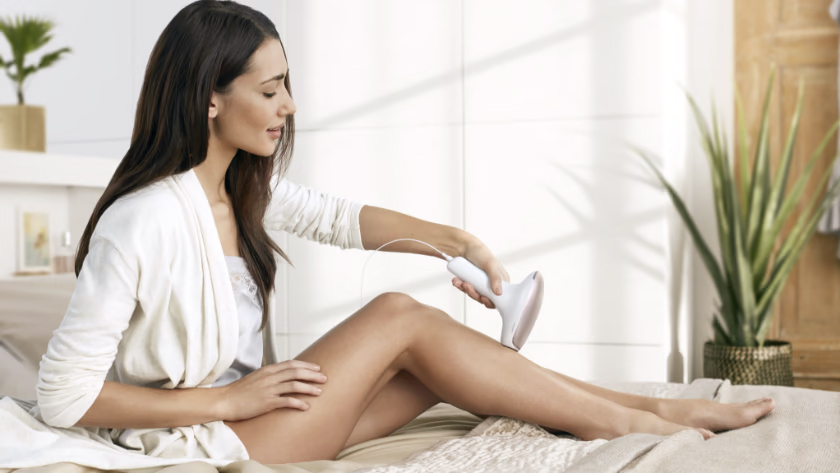
Your Skin Tone Matters: Why At-Home Devices Aren’t One-Size-Fits-All
One of the most overlooked concerns with home-use hair removal devices is how they interact with different skin tones.
Professional systems—especially modern diode lasers—are designed to treat a broad spectrum of Fitzpatrick skin types, with adjustable wavelengths and fluence levels. But most home devices lack this flexibility.
This means:
- Lighter skin with dark hair may get moderate results.
- Darker skin tones face higher risk of burns and pigmentation changes.
- Blonde, grey, or red hair often won’t respond at all.
As Westlake Dermatology explains, home-use IPL and laser devices often don’t detect or adjust correctly for higher melanin levels—leading to overexposure and injury.
By contrast, clinics like Perizia Aesthetics use professional systems calibrated for your unique profile, ensuring that treatments are both safe and effective, no matter your skin tone.
Safety Standards and Oversight: What At-Home Devices Lack
When it comes to medical-grade treatments—especially those using lasers or light—oversight matters.
In Florida, the use of laser or IPL devices is classified as a medical act, and by law, must be performed by, or under the supervision of, a licensed physician or medical professional (Wikipedia). This regulation is in place for good reason: it helps protect clients from harm and ensures treatments are safe, ethical, and properly administered.
At-home devices, on the other hand, bypass all clinical protocols:
- No skin assessment or contraindication review
- No medical screening for moles, skin cancer risk, or medications
- No professional adjusting settings in real-time
- No medical-grade cooling or protection
Even if a device is labeled as “FDA-cleared,” that doesn’t mean it’s equivalent to in-clinic devices. The clearance process for home devices is less rigorous, especially when categorized for “cosmetic use.”
In a professional medspa environment like Perizia Aesthetics, your safety is built into every step—from device calibration to post-treatment care. That’s peace of mind a manual can’t provide.
Shortcuts Can Cost More in the Long Run
The upfront cost of an at-home device might look appealing—but when you zoom out, the value starts to shift.
Hidden Costs of DIY Devices:
- Frequent sessions: Lower energy levels mean more treatments needed
- Maintenance items: Cartridge refills, replacement parts, protective eyewear
- Time loss: Hours spent self-treating small areas with inconsistent results
- Mistakes: Burns, irritation, or pigmentation issues may require medical correction
And for many users, the results don’t last. A year later, regrowth appears, and they’re back to square one—or turning to professionals after wasting both time and money.
On the flip side, professional treatments are tailored to your skin and hair profile. While the cost varies depending on many factors—such as treatment area, hair density, and skin type—the value lies in results: longer-lasting hair reduction with fewer sessions and less trial-and-error.
If you’re wondering what’s right for you, Perizia Aesthetics offers honest, pressure-free consultations. Simply contact us here or call 561-318-7895 to get started.
FAQs: Can At-Home Hair Removal Devices Be Trusted?
Do home devices permanently remove hair?
Not usually. Most offer temporary reduction and require ongoing use to maintain results.
Are they safe for all skin tones?Are they safe for all skin tones?
No. Many are not recommended for darker skin tones due to burn and pigmentation risks. Professional devices are calibrated for broader safety.
Can I use them over moles or tattoos?
No. Using light-based devices over pigmented lesions or inked skin can result in burns or scarring.
Is there a cancer risk from using these devices?
Current evidence suggests non-ionizing light used in laser hair removal does not cause cancer. However, it's still advised to avoid treating suspicious moles or skin lesions. (Cancer.org.au)
Can I alternate between at-home and professional treatments?
It's not recommended without consulting a provider. Mixing systems can increase the risk of skin stress and inconsistent results.
Conclusion: Choose Proven Safety, Not Risky Shortcuts
At-home laser hair removal may seem like a convenient, cost-saving solution—but the science tells a different story. Between the limited efficacy, safety concerns, and unpredictable outcomes, the risk often outweighs the reward.
When you choose a professional clinic like Perizia Aesthetics in Jupiter, FL, you’re choosing:
- Certified laser specialists
- FDA-cleared, medical-grade technology
- Personalized treatment plans
- Safe, effective results for all skin types
Don’t risk your skin health to save a few dollars—or trust a device to do a professional’s job.
Call 561-318-7895 or book a consultation today. We’ll help you decide what’s best for your goals, skin, and lifestyle—with no guesswork, no gimmicks, and no regrets.

